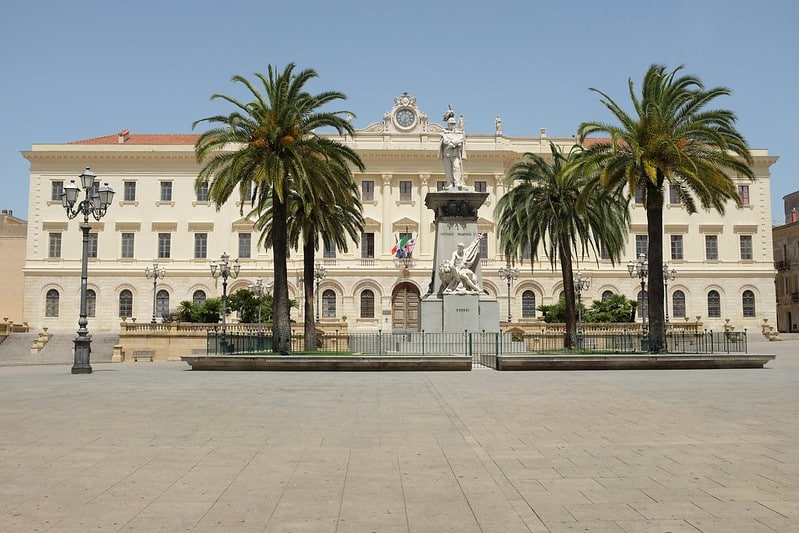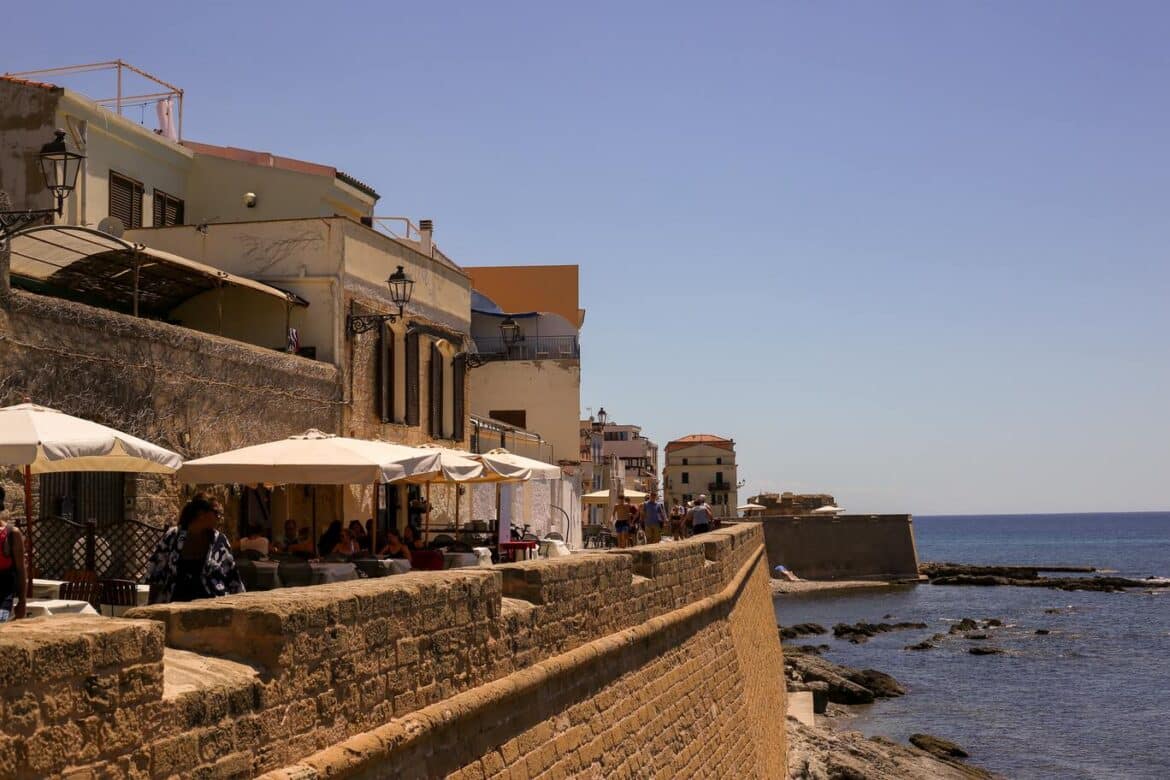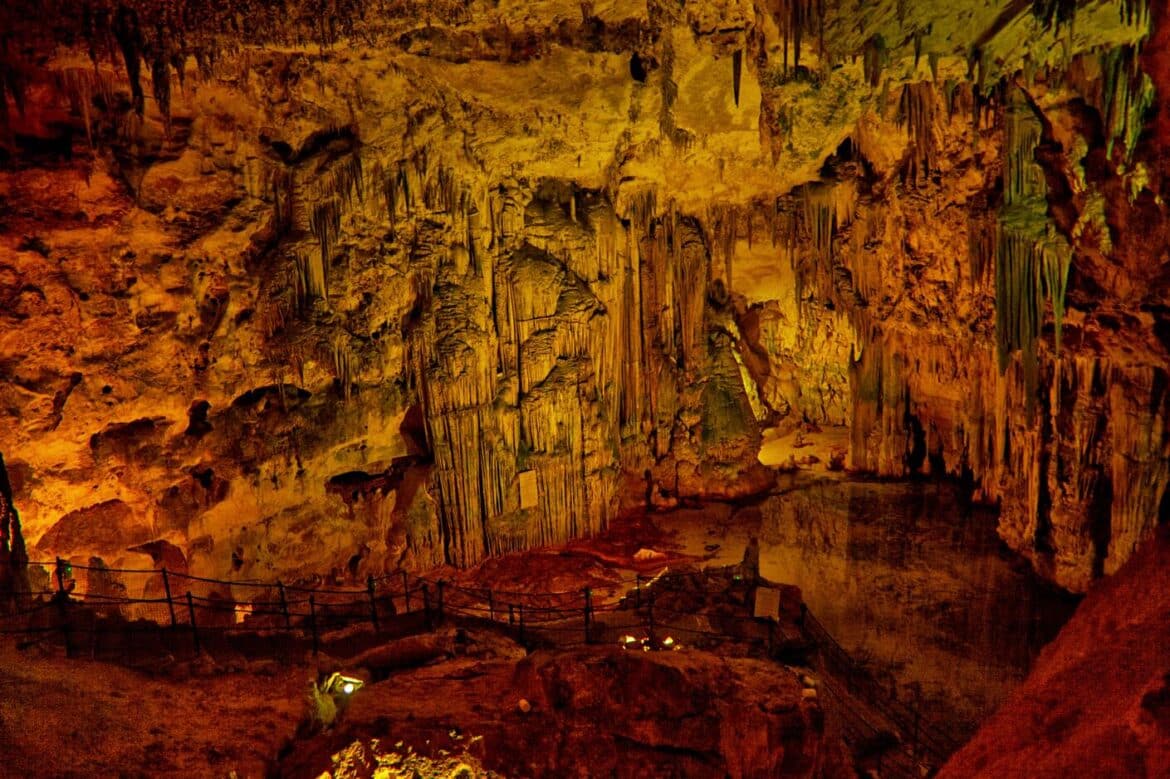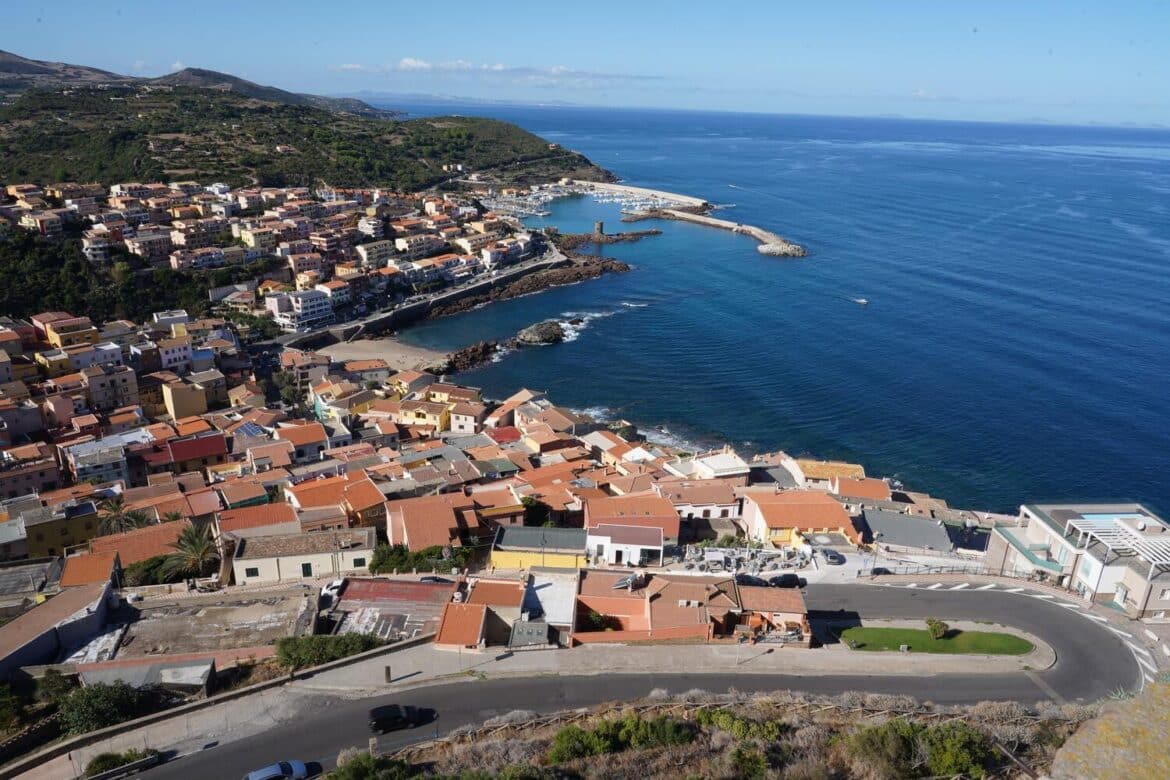In this warm beginning of autumn, what could be better than an electric car trip to Sardinia? Between Sassarese and Gallura lies one of the most beautiful itineraries in Sardinia, a route that winds between the hinterland and the sea, between historic centres and large areas of unspoilt nature. One of the corners of Italy most sought after by tourists in the summer season, where colours and scents are often the absolute protagonists.
From Sassari to Olbia, passing through Alghero, Stintino and Castelsardo, it is a plunge into the most authentic Sardinia, where history, marked by the dominations of the Aragonese and Spanish but also and above all enriched by the presence of the Savoy dynasty, and local culture mingle with traditions and unique flavours that sometimes come from afar.
Day 1: Tissi and Sassari
Tissi
Our itinerary in Sardinia by electric car begins with a recharge at the charging station in Via Italia 1 in Tissi, a small agricultural village a handful of kilometres from Sassari. Lying on a limestone plateau, covered with Mediterranean shrubs, alternating with fertile valleys watered by the tributaries of the rio Mannu, Tissi is a land of farms, olive groves and vineyards, from which the Cagnulari wine is made.
Worth seeing in the village, characterised by low dwellings, are the parish church of Sant’Anastasia, dating back to the 12th century, the church of Santa Vittoria and the oratory of Santa Croce.
Sassari
We leave Tissi to reach Sassari in a few minutes. It is the countryside that accompanies us to the largest city in the north of the region, situated on a wide plateau that gently descends to the Gulf of Asinara.
We have lunch with a taste of aubergines alla sassarese, prepared with chopped garlic, chilli pepper, parsley, extra virgin olive oil and a little salt, and a dish of chiusoni alla gallurese, typical gnocchi prepared with tomato, sausage and pecorino cheese.
After lunch, we set off to explore the town. The first stop is the Rosello fountain. One of Sassari’s architectural jewels, it features late Renaissance forms, and was the destination, at the end of the 19th century, of water vendors who filled their barrels with water here, which they loaded onto donkeys to then distribute to local homes. A unique monument in the entire region, it allegorically represents the flow of time, symbolised by twelve mouths joined by four statues representing the seasons.
Near the fountain is the Church of the Holy Trinity, from which we reach the old town centre, where the most interesting buildings include the Baroque cathedral of San Nicola, overlooking Piazza Duomo and the religious heart of the city, Palazzo d’Usini, a fine expression of 16th-century Sassari, and Palazzo Ducale, home to the Town Hall.
The second part of the afternoon is dedicated to shopping in Piazza Castello, Via Luzzati, Largo Cavallotti and Corso Vittorio Emanuele, intertwining with the narrow alleyways populated by artisan workshops where you can buy a bottle of myrtle, a bottle of Cannonau or perhaps a piece of pecorino cheese.
A tasty dinner with donkey and baked potatoes accompanied by full-bodied Cannonau wine and a night walk through the streets of the centre.
-

Sassari, photo by Alexander van Loon
Day 2: Sassari and Alghero
Sassari National museum
The destination of the morning in Sassari is the Museo Nazionale ‘G.A. Sanna’, one of the region’s leading museums. Named after Giovanni Antonio Sanna, an entrepreneur and politician originally from Sassari, the museum offers an unmissable opportunity to retrace the history of Sardinia.
From the Lower Palaeolithic to the pre-Nuragic sanctuaries and necropolises, from the many artefacts of the nuraghi, including weapons, bracelets and statuettes, to the Etruscan and Greek finds, from the Roman hall to the Medieval hall, a unique and unforgettable tour.
Lunch with a good plate of pasta and ricotta before setting off for one of the region’s maritime capitals, Alghero.
Alghero
The countryside of the north-west of Sardinia accompanies us in just over half an hour of travel between Sassari and Alghero. Known as the little Barcelona, of which it has preserved the Catalan language, spoken by the inhabitants in the Alghero variant, Alghero is among the most important maritime destinations in the region. Heart of the Riviera del Corallo, so called for the precious red coral that populates its waters, it is surrounded by beaches with fine sand and cliffs.
The enchanting sea, beaches and natural landscapes are joined by the splendid old town that can be reached by crossing the Porta Terra Tower, the ancient access to the city. A walk along the ramparts is added to a visit to the dense network of streets.
The church of San Francesco, with the beautiful cloister of San Michele, the cathedral of Santa Maria, with the beautiful decorations in flowery Gothic style of the portal, and the buildings overlooking Piazza Civica, are part of the beautiful historic center, where, not to be missed, there are shops, boutiques and ateliers where you can buy coral jewelry and local gastronomic delights.
Dinner with the traditional capunara, a dish from the pastoral tradition, biscuits sprinkled with water and vinegar with shellfish, anchovies, boiled eggs and seafood, to continue with a plate of fish with seafood that we accompany with a sparkling white Alghero wine.

Day 3: Alghero and Stintino
Promontory of Capo Caccia
Do not miss a visit to the nearby caves of Neptune, which we reach by boat: departure from the marina until we reach the promontory of Capo Caccia. A unique spectacle that the caves offer, geological wonders with an enchanting scenographic impact: from the Acquasantiera, the monumental stalagmite of over two meters high, to the Hall of Ruins, from the Smith Room to the Hall of Lace and Lace, just to name a few, is a succession of emotions, one of the most beautiful natural spectacles in the region.
Dinner with the typical lobster “Catalana”, boiled and served on the table with salt, pepper, lemon and olive oil, which we taste with a white of Sardinia, Vermentino.
Stintino
We leave the beautiful Alghero to head north, towards Stintino, another place of great charm in the north of Sardinia. About fifty kilometers through the countryside and here we come to the view of the sea. It is the sea, wonderful, the protagonist of this corner of the region, a stone’s throw from Asinara.
Strip of land between two seas, with to the west the suggestive “mare di fuori”, with the high and jagged coast alternating with coves of sand and pebbles, and to the east the “mare di dentro”, inside the gulf. In Stintino we treat ourselves to an unforgettable dinner all based on fish: we taste the octopus alla stintinese and the lobster soup.

Day 4: Castelsardo and Calangianus
Castelsardo
We leave early from Stintino to reach another pearl of the northern coast, Castelsardo, a center equipped with port, beaches and coves. 54 kilometers that partly border the blue sea, up to the enchanting view of the village resting on the sea, with the town dominated by the Doria fortress, the Genoese family who founded the village calling it Castelgenovese.
To see the medieval church of Santa Maria delle Grazie, which houses the fourteenth-centurywooden crucifix of the Black Christ, the fourteenth-century cathedral of Sant’Antonio Abate and the Museum of Mediterranean Weaving, located in the castle, dedicated to the regional tradition of using the plant resources of the territory such as rush, asphodel and dwarf palm for the realization of everyday objects according to what are the ancient techniques of manual weaving.
A path, that of the museum, which accompanies the visitor between tools, sieves and artifacts, including baskets. Lunch with a tasty fish soup, prepared with large fish cut into pieces and small fish dissolved in broth, all then cooked in the sautéed vegetables.
Calangianus
We leave the beautiful Castelsardo to head towards Calangianus. We leave the sea behind to reach one of the richest centers of the region, land of cork production. Lying at five hundred meters above sea level, we reach it after just over an hour of travel. We leave our electric car in via Vittorio Emanuele 16, to charge it at the Plenitude + Be Charge column, after having traveled over two hundred kilometers since the beginning of the itinerary.
Visit to the Cork Museum, which tells the tradition-symbol of the village, with the exhibition of ancient machinery and cork objects. For dinner we treat ourselves to a Gallura soup, prepared with stale bread, moistened with meat broth, and enriched with grated or shaved cheese.

Day 5: Olbia
Olbia: Necropolis Museum and Archaeological Museum
Olbia is the last destination of the itinerary. Three quarters of an hour of travel and here we are at the important port city of the north-east of Sardinia. T ra the main gateways of the region, offers in several of its areas ancient vestiges. Museum of the Necropolis and Archaeological Museum celebrate its history, while it is the sea and the beautiful gulf on which it overlooks, to distinguish its beauty.
Among turquoise coves and beaches, Olbia offers dream places and is the gateway to some of the most beautiful areas of Sardinia and appreciated by mass tourism, the Costa Smeralda and the marine area of Tavolara. We dedicate the morning to visiting the city: do not miss a stop at the Basilica of San Simplicio, a rare example of Romanesque architecture in Sardinia, which houses the relics of the Saint, martyred bishop and patron saint of the city, and a visit to the Archaeological Museum, a cultural journey that traces the Phoenician, Greek, Punic, Roman, medieval, modern and contemporary eras of the city and its port.
The coast of Olbia
Lunch with a plate of spaghetti garlic, oil, chilli, shrimp and datterini and a loin of roasted sea bream with vegetables. To finish a crème brulee. After lunch of total relaxation. After visiting the city and a rich meal you can not miss a little rest on the shores of the beautiful sea of the coast of Olbia.
Among turquoise coves and beautiful coves, the gaze is kidnapped by the enchanting colors of this corner of Sardinia of poignant beauty. Dinner by the sea with a tasty fish soup to be enjoyed with a good local white wine, a Vermentino di Gallura. Grand finale with a good glass of Myrtle with beauty and the memory of an unforgettable itinerary in your eyes.










